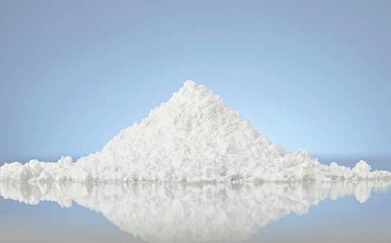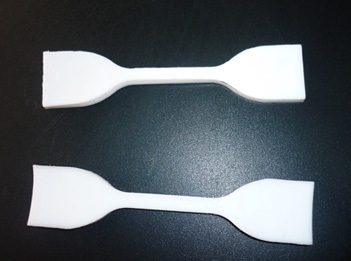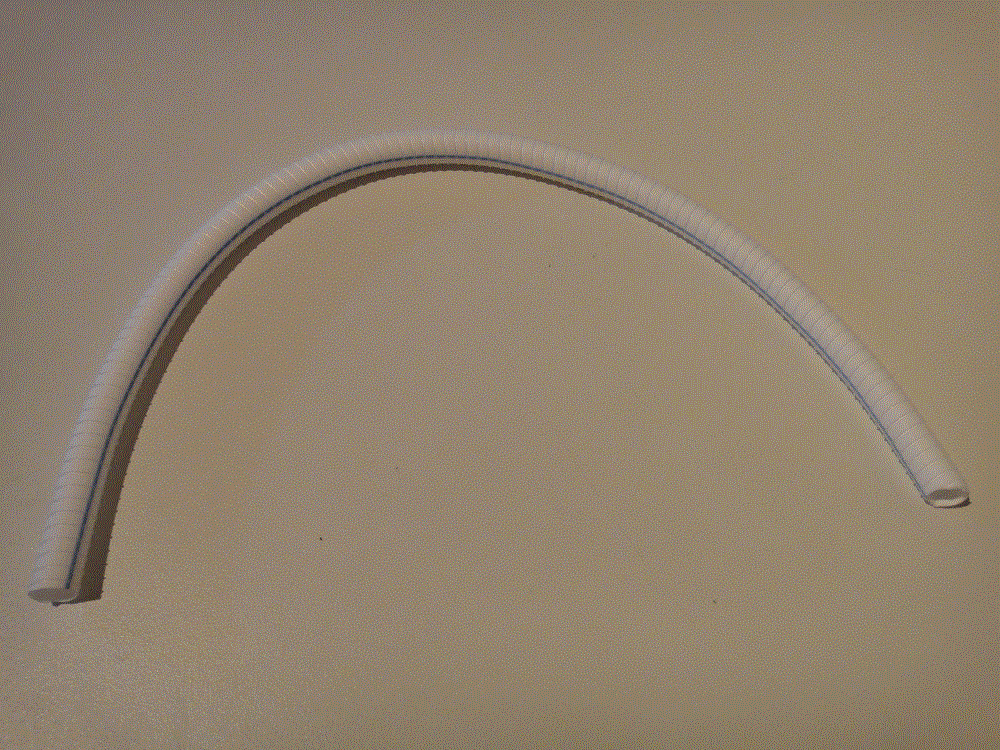POLYTETRAFLUOROETHYLENE (PTFE)
 PTFE powder
PTFE powder
Generally, thermoplastics have two major disadvantages: low heat resistance when compared to metals and low resistance to chemicals. So what material can we use to produce parts that will be in contact with chemicals or that will be used at temperatures above 212°F (100°C)?
The answer is Polytetrafluoroethylene (PTFE)!
PTFE (aka Teflon), as the name says, is a fluorinated polymer; and fluorine as well as other elements of the column of the halogens has the property of flame retardancy. But this property is just one of the excellent features of this material. The high intermolecular forces generated by the presence of large fluorine atoms gives great rigidity to the macromolecule, thus hindering changes in conformation, which promotes high thermal stability, low coefficient of friction and chemical inertness. PTFE is not only suitable for use at high temperatures but also at low, having useful mechanical properties at cryogenic temperatures up to -436°F (-260°C).
The molecular structure of PTFE is linear with repeating units of -CF2-CF2-, thus, a crystalline polymer (degree between 93% and 98%) with a crystalline melting temperature of 621°F (327°C) and density between 132.97 and 136.72 lb/ft³.
 Chemical structure of PTFE
Chemical structure of PTFE PTFE specimens for tensile tests
PTFE specimens for tensile tests
PTFE is considered a high performance plastic, with a step up of engineering plastics such as polyamide and polyacetal in the "hierarchy" of polymers, as well as its price. PTFE has very high viscosity, which prevents it from being processed in the same manner as other thermoplastics (injection molding, extrusion etc), so its use is required in powder form, for compression molding and subsequent sintering at high temperatures.
Despite having high impact resistance, PTFE relative to engineering plastics has low tensile strength, creep and to the use, in some applications requiring the incorporation of fillers such as fiberglass, bronze, carbon fiber, stainless steel and synthetic coal. Also common is the incorporation of graphite and molybdenum disulphide to further improve their sliding and anti-adhesive properties, since the coefficient of friction of PTFE is lower than almost all other plastics (remerber the Teflon used as non-stick coating in pans?).
Features:
- High impact resistance
- High chemical resistance
- Low dielectric constant and loss factor
- Useful mechanical properties even at cryogenic temperatures
- Low tensile strength
- Low resistance to the use
- Low creep resistance
- Antiflame
Applications:
Stadium coverage, sealing tape, non-stick coating, gaskets, grease component, piercing, pipe coating, valves, tubes replacing human veins etc.
Bibliography:
HARPER, Charles A.; PETRIE, Edward M. Plastics Materials and Process: A Concise Encyclopedia. Hoboken: John Wiley & Sons, Inc., 2003.
CANEVAROLO JR., Sebastião V. Ciência dos Polímeros: Um texto básico para tecnólogos e engenheiros. 2.ed. São Paulo: Artliber Editora, 2002.
WIEBECK, Hélio; HARADA, Júlio. Plásticos de Engenharia: Tecnologia e Aplicações. São Paulo: Artliber Editora, 2005.
© 2010-2024 - Tudo sobre Plásticos.
All rights reserved.
Home
-
Privacy policy
-
Contact







